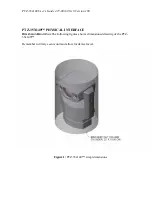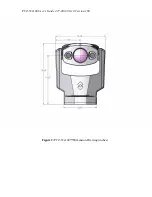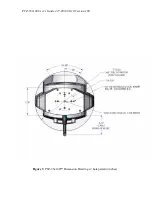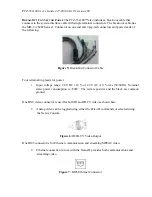
PTZ-35x140
Quick Start Guide 427-0011-00-12 Version 100
similarly-equipped enemy observer, it is understandable that military interest in the image converter eventually
faded.
The tactical military disadvantages of so-called 'active’ (i.e. search beam-equipped) thermal imaging systems
provided impetus following the 1939– 45 war for extensive secret military infrared-research programs into the
possibilities of developing ‘passive’ (no search beam) systems around the extremely sensitive photon detector.
During this period, military secrecy regulations completely prevented disclosure of the status of infrared-imaging
technology. This secrecy only began to be lifted in the middle of the 1950’s, and from that time adequate thermal-
imaging devices finally began to be available to civilian science and industry.
How do Infrared Cameras Work?
Infrared energy is part of a complete range of radiation called the electromagnetic spectrum. The electromagnetic
spectrum includes gamma rays, X-rays, ultraviolet, visible, infrared, microwaves (RADAR), and radio waves. The
only difference between these different types of radiation is their wavelength or frequency. All of these forms of
radiation travel at the speed of light (186,000 miles or 300,000,000 meters per second in a vacuum). Infrared
radiation lies between the visible and RADAR portions of the electromagnetic spectrum. Thus infrared waves have
wavelengths longer than visible and shorter than RADAR.
The primary source of infrared radiation is heat or thermal radiation. Any object which has a temperature radiates in
the infrared portion of the electromagnetic spectrum. Even objects that are very cold, such as an ice cube, emit
infrared. When an object is not quite hot enough to radiate visible light, it will emit most of its energy in the
infrared. For example, hot charcoal may not give off light, but it does emit infrared radiation which we feel as heat.
The warmer the object, the more infrared radiation it emits.
Infrared cameras produce an image of invisible infrared or “heat” radiation that is unseen by the human eye. There
are no colors or “shades” of gray in infrared, only varying intensities of radiated energy. The infrared imager
converts this energy into an image that we can interpret. Several detector technologies exist; the sensors in the FLIR
ThermoVision® cameras are of the latest solid state design, offering long life and fully automatic image
optimization (contrast and gain). True thermal imagers should not be confused with infrared illuminator cameras
that are often presented as simply “infrared cameras.” There are hundreds of low cost infrared illuminated cameras
on the market at prices below $100. These cameras do not produce the same image because they do not detect heat.
They operate in wavelengths near visible, and require an IR illuminator to provide an image. IR illuminators have
very short range, and require a lot of power to see beyond 5 meters.

































